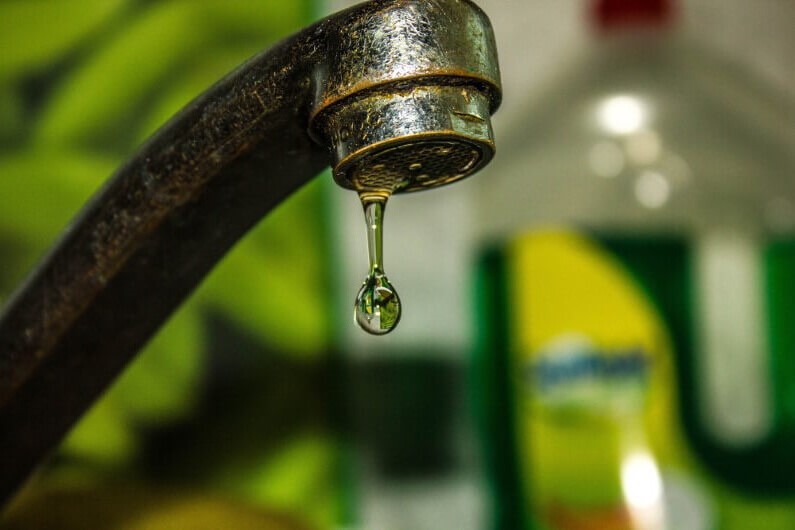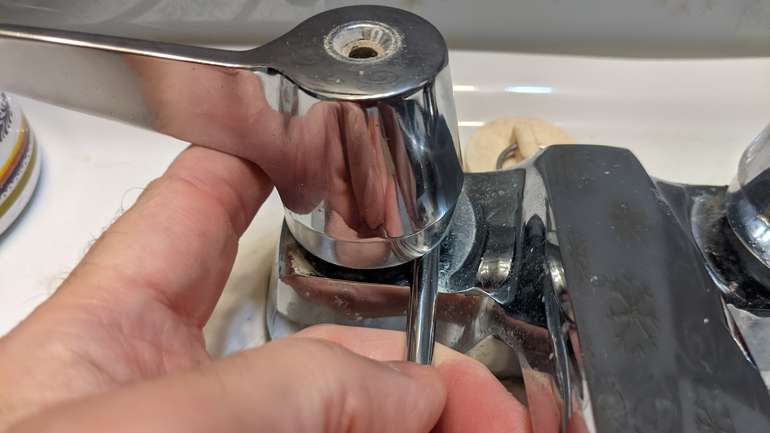Uncovering the Importance of Correcting a Malfunctioning Faucet
EstimatingJust how do you actually feel when it comes to Why Is It Important To Fix Your Leaking Tap/Faucet??

Leaking taps could look like a minor aggravation, yet their impact goes beyond simply the nuisance of the audio. From wasting water to incurring unneeded monetary prices and wellness dangers, neglecting a trickling faucet can result in various repercussions. In this post, we'll look into why it's important to address this typical household issue without delay and properly.
Waste of Water
Environmental Effect
Dripping faucets add significantly to water wastefulness. According to the Epa (EPA), a solitary tap leaking at one drip per secondly can waste more than 3,000 gallons of water annually. This not just pressures water sources but also influences environments and wild animals dependent on them.
Financial Expenses
Boosted Water Expenses
Past the ecological impact, dripping faucets can blow up water bills substantially. The gathered wastage gradually converts into higher utility expenditures, which can have been prevented with timely repair work.
Possible Home Damage
Moreover, extended leaking can lead to harm to components and surfaces surrounding the tap. Water buildup can cause staining, rust, and even structural concerns if left unattended, resulting in extra fixing prices.
Health and wellness Issues
Mold And Mildew and Mildew Growth
The constant visibility of dampness from a leaking tap develops an optimal environment for mold and mildew and mold development. These fungi not only jeopardize indoor air high quality but additionally position health risks, especially for people with breathing conditions or allergic reactions.
Waterborne Illness
Stagnant water in dripping faucets can end up being a breeding place for microorganisms and various other microorganisms, raising the danger of waterborne diseases. Impurities such as Legionella germs thrive in stagnant water, possibly resulting in major health problems when ingested or inhaled.
Do it yourself vs. Specialist Repair work
Advantages and disadvantages of Do It Yourself Repair Work
While some may try to repair a dripping faucet themselves, do it yourself fixings include their own set of obstacles. Without appropriate understanding and devices, do it yourself attempts can aggravate the problem or lead to insufficient repairs, lengthening the issue.
Benefits of Employing an Expert Plumber
Employing a specialist plumber guarantees that the underlying source of the dripping faucet is resolved efficiently. Plumbing professionals have the proficiency and equipment to identify and repair faucet issues successfully, saving time and minimizing the risk of additional damages.
Step-by-Step Guide to Repairing a Dripping Tap
Devices Required
Before attempting to take care of a leaking tap, gather the needed tools, consisting of a flexible wrench, screwdrivers, replacement components (such as washing machines or cartridges), and plumber's tape.
Common Tap Issues and Their Solutions
Recognize the sort of faucet and the certain issue creating the drip. Common problems include damaged washing machines, rusty shutoff seats, or defective O-rings. Refer to producer instructions or online tutorials for step-by-step support on repairs.
Safety nets
Normal Upkeep Tips
To avoid leaking faucets, execute routine maintenance such as cleaning up aerators, inspecting for leaks, and changing damaged components promptly. Additionally, think about installing water-saving tools or upgrading to much more effective fixtures.
Value of Prompt Repairs
Dealing with trickling faucets as quickly as they're discovered protects against additional water waste and possible damages, inevitably saving both water and money over time.
Influence On Residential Property Value
Understanding of Well-Maintained Building
Maintaining a residential or commercial property in good condition, consisting of dealing with upkeep concerns like trickling faucets, boosts its perceived value and worth amongst potential purchasers or occupants.
Influence on Resale Worth
Properties with properly maintained plumbing fixtures, consisting of taps, command higher resale worths in the property market. Addressing leaking taps can contribute to a positive impression during residential or commercial property inspections and arrangements.
Ecological Obligation
Individual Contribution to Preservation
Taking responsibility for repairing leaking taps lines up with more comprehensive initiatives toward water preservation and environmental sustainability. Every person's actions collectively make a considerable impact on preserving valuable sources.
Lasting Living Practices
By prioritizing prompt repair services and taking on water-saving habits, individuals contribute to sustainable living practices that profit both present and future generations.
Final thought
Resolving a dripping tap goes beyond plain ease; it's a crucial step toward preserving water, reducing monetary prices, and safeguarding health and building. Whether with DIY fixings or professional aid, taking action to deal with leaking faucets is a little yet impactful means to promote liable stewardship of sources and add to a much healthier, much more lasting future.
How to Fix a Dripping or Leaky Faucet
A leaking faucet is one of the most common problems that homeowners encounter, but it being commonplace doesn’t make it any less annoying. The constant drip drip drip of a leaking bathtub faucet, showerhead, or sink tap can disturb your home’s serenity. Left neglected, a dripping faucet can also result in higher water bills and discoloration or mold growth in your sink or plumbing fixtures.
Fortunately, you don’t have to be a trained plumber to know how to stop a dripping faucet. With some basic tools, replacement parts, and a little patience, leaky faucet repair is a breeze. In this article, we’ll explain what causes dripping faucets and how you can fix them.
What Causes a Leaking Faucet?
Kitchen and bathroom faucets come in all manner of designs, but most involve some combination of valves, O-rings, seals, and washers. The O-ring is usually the weakest link, but any one of these pieces can wear down over time. Heat, moisture, temperature fluctuations, minerals, mold, and movement can contribute to warping and corrosion, breaking the watertight seal. This just comes with the territory of being a homeowner. Everything is always subject to wear and tear, and some component parts of your appliances and fixtures need to be replaced on occasion. At least replacement O-rings are cheap!
More rarely, dripping faucets can be a symptom of excessively high water pressure. Were this the case in your home, you would probably notice that the leak is not isolated to one faucet. Water pressure issues are harder to resolve on your own. We recommend contacting a professional plumber if you suspect your water pressure is too high.
How to Fix a Dripping Faucet
Pipe wrench or monkey wrench Allen wrench set Screwdrivers Old towel or rag Shut off the water.
Before you do anything, you need to turn off the water to keep from drenching your kitchen or bathroom. You should find a valve under the sink and against the wall. Once you’ve turned this valve, try turning the faucet on to confirm that the water source has been cut off.
If you can’t locate your local valve for the faucet you’re working on, you can always shut off the water to the house at the main valve. Of course, this will prohibit anyone from using the sinks, showers, or toilets while you’re working on the faucet that’s giving you trouble.
Plug or block the drain.
You’ll be disassembling the faucet and removing some small bits of hardware. Plug the drain with a stopper or rag to avoid the possibility of a small screw falling into your P-trap.
Take apart the faucet assembly.
There are several varieties of kitchen and bathroom faucets, each with its own manner of assembly. For detailed instructions on how to disassemble your faucet, you can refer to the fixture’s manual or contact the manufacturer. If you know whether you have a ball, disc, cartridge, or compression faucet, you can find detailed schematics online.
In general, you need to begin by removing the faucet handles. You might notice a small screw that you’ll need to remove with a screwdriver or Allen wrench. If you don’t see any visible securing hardware, it’s likely hidden under a decorative cap that can be unscrewed or popped off with flathead screwdriver.
Remove each piece methodically, consulting a schematic when necessary. Take notes or arrange the pieces in such a way to make it easier to correctly reassemble the faucet later.
Remove the cartridge.
Once you’ve removed the handles and securing hardware, you should be able to remove the valve cartridge or stem. Some cartridges will slide right out. Other faucet models will require you to loosen a nut with a pipe wrench before you can remove the valve stem.
Examine the exposed hardware.
With the cartridge or stem removed, inspect the component parts. Check the rubber O-rings for wear and tear. Also examine the seat washer for corrosion or other damage. These pieces are usually the responsible parties for a dripping faucet, but it’s worth inspecting the other component parts while you have the faucet disassembled.
Find replacement parts.
Once you’ve identified which faucet component has failed, find an identical replacement. Your local hardware store should have O-rings, seat washers, and other standard components in stock. If you have a luxury or uncommon faucet, you may have to contact the manufacturer for a replacement part.
It’s a good idea to take your old parts with you to the hardware store so you can compare them with the store’s inventory and be sure you’re purchasing the correct replacement.
Reassemble the faucet.
With your new parts in hand, reconstruct the faucet and handles. Don’t be tempted to overtighten screws or nuts. You might think this could create a better seal, but it can instead damage or bend a delicate part of the assembly and create a new problem for you.
Turn on the water and test the faucet.
The only thing left to do is test your work. Unplug the sink, turn the water back on, and try the faucet. Congratulate yourself on a job well done!
https://www.libertyhomeguard.com/how-to-fix-a-dripping-or-leaky-faucet/

We hope you liked our part on Water Dripping from Faucet: Why and How to Fix. Thanks so much for taking time to read through our piece. Are you aware of anybody else who is fascinated with the subject? Be sure promote it. We cherish reading our article about Why Is It Important To Fix Your Leaking Tap/Faucet?.